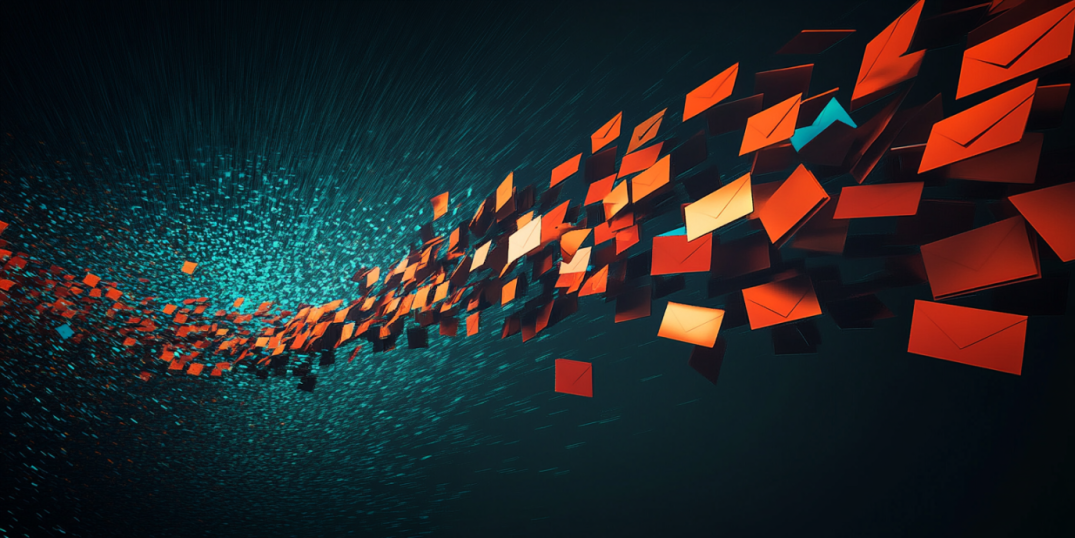- Home
- Fundamentals of Email Marketing
- How to Design Email Sequences ...

Contemporary email marketing is shaped by two interconnected trends: personalization (dictated by generational demands) and the growing sophistication of automation technologies. Where once it was enough to just send, today it matters how, when, and to whom you are speaking. These requirements have pushed email marketing towards continuation instead of a once-in-a-while occurrence. This continuation is called an email sequence.
For modern email sequencing to succeed, it has to learn to recognize, adapt, and respond to the subtle variations in behavior, preference, and intent that define real human engagement. In this article, we will examine what makes an email sequence feel genuinely personal rather than artificially fabricated; review good email sequence examples; and walk through how to design automated email sequences that maintain human nuance without losing technological efficiency.
What Is an Email Sequence?
An email sequence is a series of pre-written emails that are automatically sent to a subscriber over a set period of time. Unlike one-off newsletters or random promotional emails, email sequences are planned to guide people through their journey with a brand.
Email sequences can also be triggered by people’s actions. For example, if someone signs up for your newsletter, views a product, or abandons a cart, it can trigger a specific sequence that fits what they need at that moment.
Here’s how a simple sequence might look:
- Day one: A welcome email—thanks for joining; here’s what to expect.
- Day three: A story about your brand or product—something personal is great.
- Day five: A helpful tip, guide, or resource—no strings attached.
- Day seven: A gentle invitation—like a special offer or a product recommendation.
- Day ten: A follow-up—checking in or offering another useful piece of content.
Time- or action-triggered email sequences gently keep the customer on the path of engagement.

What Makes an Email Sequence Personalized?
While the idea of adding personalization into email sequences is not new, the actual execution of it remains inconsistent across different marketing practices. Traditionally, personalization was associated primarily with inserting the recipient’s first name or basic information into a template, creating an illusion of an individual approach. However, with the evolution of consumer expectations and available technologies, this method has lost its perceived value rather fast.
The difference between earlier and current approaches to email marketing personalization lies not in the tools themselves but in how they are used. Whereas inserting a static name field worked when expectations were lower, today’s users expect more sophisticated, behavior-based reactions. Automated personalized emails that react to what users read, ignore, click, or hesitate over are becoming the new norm. Therefore, personalization gradually shifts from being a decorative element of email marketing to becoming its structural foundation.
So, the essence of personalized automation lies not in creating the illusion of attention but in practicing actual attention through data interpretation. If a user consistently shows interest in eco-friendly products, and yet the marketing sequence continues offering them random, unrelated promotions, personalization becomes a hollow concept (even if you call a user by name). Thus, when asking “What is an email sequence?” today, it is important to acknowledge that successful email sequencing depends not only on technical triggers but also on the marketer’s ability to read the signals coming from user behavior.

Email Sequence Examples
Email sequences are not characterized merely by the number of emails sent or the time intervals between them. Instead, the classification now represents the user’s stage within the brand experience and the strategic purpose of each interaction. Below are several types of personalized automated email sequences that have proven their relevance across industries:
1. Welcome sequence
In marketing, first impressions are fundamental for building trust, which makes a welcome sequence the foundation of brand perception. The opening emails frame the conversation to come: are you approachable, are you credible, are you worth listening to?
Beyond simple greetings, a strong welcome sequence introduces brand values, sets behavioral expectations, and invites action. If the initial interaction feels stale or manufactured, the rest of the relationship usually follows the same downward trajectory.
👉 Good email sequence example:
A tech startup sends a three-part welcome sequence: a personal note from the founder, a quick tour of the platform’s best features, and a small incentive to explore premium options—establishing trust, offering value, and inviting next steps without overwhelming the new subscriber.
2. Post-purchase sequence
In earlier times, sales marked the end of a transaction. Today, it marks the beginning of relationships. A post-purchase email sequence transforms a one-time buyer into a client. Neglecting post-purchase communication is a slow and silent way to lose customers. While acknowledging their decisions, providing support, and reminding them of their value have become a must for brands aiming for long-term success.
👉 Good email sequence example:
A home decor brand sends a post-purchase sequence: thanking customers for their order, sending styling tips for the products they bought, and offering a sneak peek at a new exclusive collection available only to returning customers.
3. Re-engagement sequence
Consumer inactivity is often misinterpreted as final rejection when in reality, it’s usually hesitation due to multiple reasons. A properly designed re-engagement email sequence challenges the assumption that the silent customer is a lost customer. Instead, it reframes the silence as an opportunity and a second first impression. The key is not to guilt-trip those who paused but to invite, remind, and offer something worth returning for.
👉 Good email sequence example:
An online fitness platform sends a re-engagement sequence: a gentle reminder showcasing a new 10-minute workout series, a special “we miss you” offer, and a choice to update preferences if the user’s goals have changed.
4. Educational sequence
When people don’t fully understand something, they tend to avoid it. Not because they aren’t interested, but because lack of understanding leads to uncertainty, and uncertainty is uncomfortable. It triggers hesitation. And hesitation kills action.
So, a good educational sequence fills the knowledge gap that allows users to move from uncertainty to understanding to desire to engage. It also shows what the product enables—and it frames it around what matters to the user, not the brand.
👉 Good email sequence example:
A SaaS accounting tool sends an educational series: basic tutorials, common tax-saving tips, and short customer stories showing how other businesses simplified their financial workflow—all designed to make the product feel not complicated but empowering.
5. Abandoned cart sequence
Most of the time, people don’t abandon their online carts because they have radically changed their minds in the middle of the process. Much more often, the reasons are simple and surprisingly human: they got distracted, hesitated, or decided to think it over later. It doesn’t mean the desire is gone; it simply means the moment was lost.
The purpose of an abandoned cart sequence is to gently remind customers of their initial intentions—the ones strong enough to get them browsing, choosing, and almost purchasing.
Studies confirm that over 40% of abandoned cart emails get opened, which is a very high engagement rate compared to most standard campaigns.
👉 Good email sequence example:
A boutique clothing brand sends an abandoned cart sequence: a reminder email with product photos, a second email with customer reviews of the item left behind, and a final gentle “Still thinking it over?” email offering free shipping.
Building a Personalized Sequence Step-by-Step
Step 1: Segment your audience
The foundation for building successful automated email sequences begins with clear segmentation.
At this first step, marketers divide their audiences not randomly but according to real behaviors and preferences—who clicked, who purchased, who abandoned a cart, who never opened a message. Without this division, the personalization process has no base to stand on.
Step 2: Map the customer journey
Once the groups are formed, it is crucial to predict what kind of information or encouragement each group needs to move forward.
It can be a reminder about an abandoned cart, an introduction to a newly launched collection, or a simple welcome sequence—each touchpoint must feel logical and anticipated.
Step 3: Build the timing and pacing
It is not enough to simply decide what will be sent. It is equally important to decide when and how fast. Time- or action-triggered email sequences must be coordinated properly, because wrong timing often results in lost interest, which, once lost, is hard to win back.
Step 4: Craft personalized content
Here, it is important to resist the temptation to generalize. Even the most perfect trigger or segmentation will fail if the email sounds cold, automated, or irrelevant. Every message must feel natural, with the tone and offers adjusted to the emotional stage of the recipient.
Step 5: Test, learn, and adjust
Assumptions are dangerous, especially in a dynamic environment. Only by testing subject lines, offers, send times, and calls to action can marketers ensure that their email marketing sequence evolves together with their audience.
While some aspects of email sequences have to be figured out by marketers, when it comes to design, there’s no need to reinvent the wheel with every new campaign. All you need is to use email templates that facilitate building email sequences, like the one from Sendigram. Here, you will find hundreds of email templates that can be easily adjusted for your particular email sequence.

To Sum Up
In this article, we showed that an email sequence is something that requires a structural approach and strategy. And if you think of it, it actually becomes less complicated than you might expect.
Because the truth is, the best email sequences are built on actual data you collect from your users—not on assumptions or guesses.
Once you have this data and a clear step-by-step guide to follow, building a strong email marketing sequence stops being some overwhelming creation and starts being a methodical, achievable process. Combined with beautiful, pre-made email templates, it turns into something that, while still complex in its depth, is no longer complicated in its execution. When you approach email sequences this way, they become one of the most powerful tools you have for efficiently connecting with your audience.



